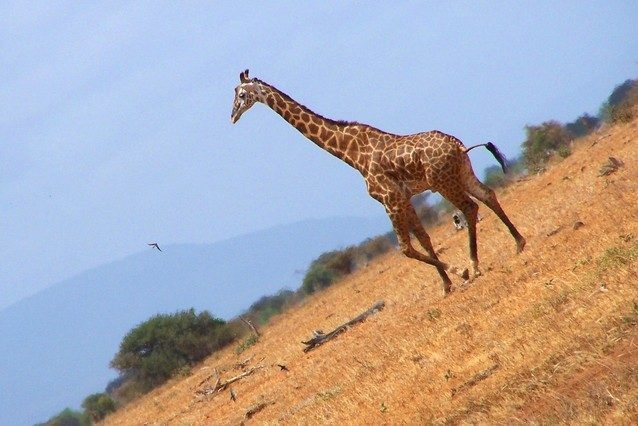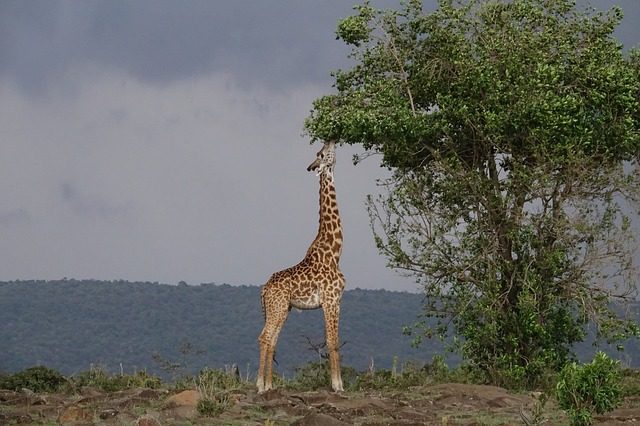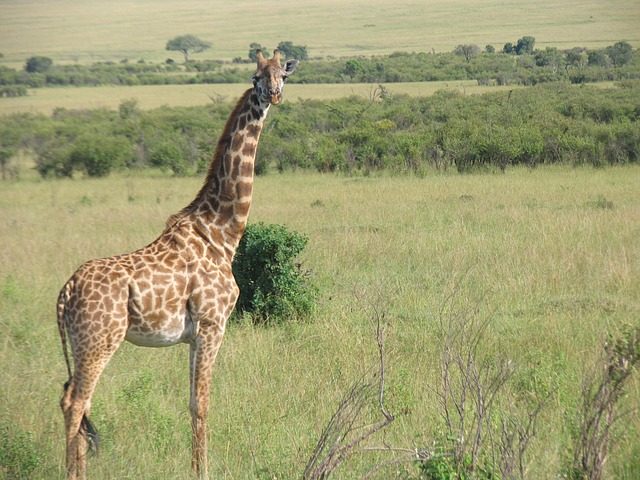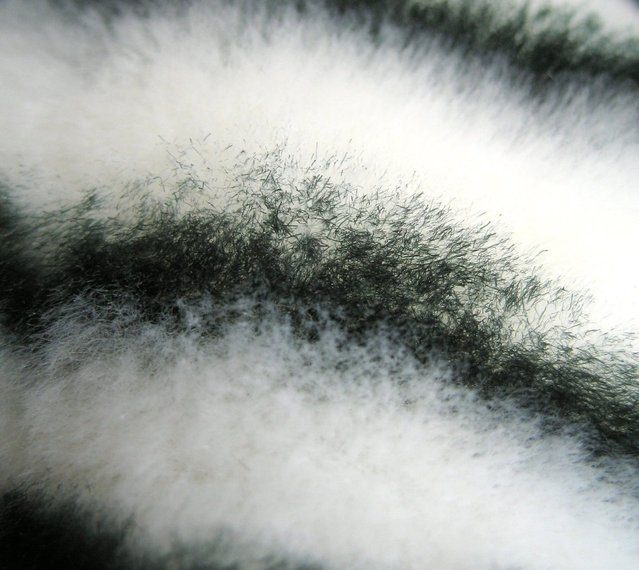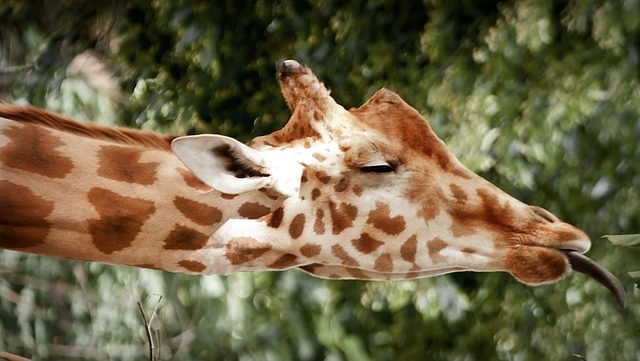Travel To Kenya To Get To Know The Giraffes
Early studies
Giraffes belong to Giraffidae family. The evolution of giraffes is unknown, but someone discovered it in 1898 for the first time. Herr von Tippelskirch who was a member belonging to a German scientific expedition to Kenya gave it its scientific name. They took information and skin samples of giraffes back to Europe for research purposes. The result was an interesting study of its anatomy and behavioral patterns. The present-day scientists, armed with this knowledge, are in a much better position to put such conservation measures in place that would protect this vulnerable species from survival threats. Many people first believed that giraffe was a cross between camel and leopard. This belief gave birth to its scientific name giraffa camelopardalis. The first part is from an Arabic word zarafa, which means fast walker. The second part is an ancient Greek word for camel and leopard.
Anatomy
Giraffe is the tallest living animal and not surprisingly have significant physical features. Its average height is 5.6m from the ground. Male giraffe is heavier than females and on an average taller by 1m. Males weigh up to 3,000 pounds and grow to be 19 feet tall, while females weigh up to 2,600 pounds and stand up to 16 feet. Despite its height, it closely relates to the shorter okapi, who live elusively in the dense tropical forests. A giraffe’s back slopes steeply from the shoulders. Their tails are long and thin, measuring about 100cm in length. At the end of the tail, there is a black tussock that whisks away flies and other insects. The design of the feet and legs of giraffes makes them very formidable. Their feet measure 12 inches in length, almost the size of a dinner plate. Their legs are 2m long, which consists of 7 long vertebrae. The bottom part looks like sticks. But they are sturdy enough to support the weight of such a huge animal.
Communication
Giraffe spots predators before any other animal because of their height, and then warns others of the danger through their soundless communication method including bellowing, hissing, snorting as well as making flute-like sounds and low pitch noises. Some other communication sounds are mooing, moaning, growling and grunting. Mother giraffes search for their lost young by whistling. And the young return the mother’s calls by mewing or bleating. While courting, males may cough raucously. Some of the communication sounds of giraffes are infrasonic sound, which means they are at frequencies that are lower than human capability and beyond people’s range. Hence, people think that giraffe is the quietest animal in the world and that it does not produce sounds. But this is not true. They do make some basic sounds.
Pacing and galloping
A giraffe walks and runs in a unique manner. It moves forward in unison both the back and front legs on one side at the same time followed by the other side. In other words, one side of the legs move together followed by the other – a movement called pacing. A giraffe’s walk might seem slow, but it can cover 5 meters with every step. That translates even a lazy, leisurely cruise to 16 kilometers per hour. The sturdy, long legs are longer than an average person’s height. The front ones are longer than the back ones. It can run or gallop in brief spurts swinging its rear and front legs together in a similar style to other animals. At high speed, the back legs tend to cross outside the front. Giraffe can run incredibly fast, although its legs look cumbersome, clumsy and ridiculously unbalanced. It’s quick and graceful gallop can easily outpace even horses. But giraffes are unlikely to replace them as it cannot sustain a lengthened chase. Their long windpipes quickly run out of breath and eventually succumb to exhaustion.
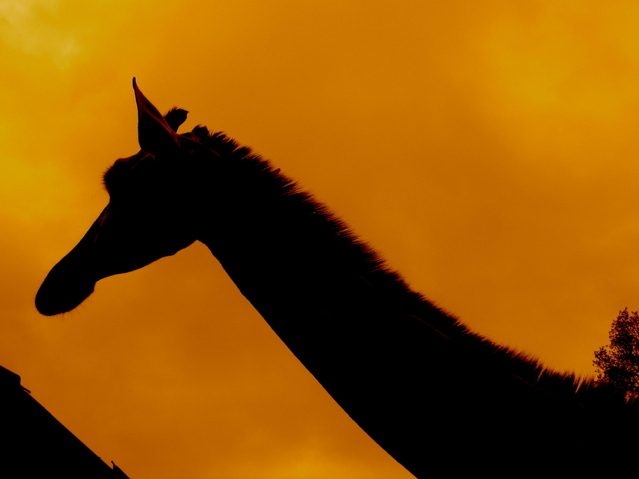
Travel to Kenya to get to know the giraffes
Long neck
The giraffe’s neck accounts for almost half its total height. It is an easily recognizable feature because of its extreme length, which makes them seem almost surreal. They have seven elongated cervicalvertebrae in the necks, just as other hoofed animals and human beings do, albeit much larger and longer. Each vertebra is about 25cm long. The seven vertebrae in their necks have ample space between them. The flexible joint that connects the vertebra to the skull allows it to tilt its head upward until perpendicular to the ground. It also allows the giraffe a large range of motion in every direction. And a system of thick muscles and Nuchal ligament prevent any strain on the shoulder.
Baffling question
The explanation as to why giraffes have such a long neck still baffles scientists at the time of writing this. The scientific community has never accepted any of the hypotheses or theories as conclusive or definitive. Some posit that the length of the neck could have been an evolutionary factor to give its body a high surface area, which helps it lose heat more efficiently. Another school of thought is that a giraffe’s long neck is an evolution solution to get to food higher up that are not accessible to any other savanna dwellers except elephants. Some adhere to the Darwinian concept that the length of its neck is a product of sexual selection or genetic factor that let those with it survive longer than the ones that did not have this genetic predisposition. The studies underway might soon be able to determine that.
Horns
Giraffes are born with rudimentary horns that lie flat to avoid injury at birth. The horns fuse with the skull only later in life. They are bone protuberances that looks like knobs or ossicones formed from ossified cartilage that grow up to five inches long. They lie on their heads above the eyes and hair, fur and skin covers it at birth. The calcium deposits that form large head bumps as they age give the appearance of more than two ossicones. Horns are one of the reliable methods to identify its sex. The skin-covered ossicones or horns of male giraffes tend to be bald at the top as a result of the effect of necking. During such tussles, the knobs protect the head from injury. They are also more developed and thicker than the females.
Eyesight
Giraffes have large eyes with excellent eyesight. They rely on their height and sight to have a continual view of the great distances of savanna. The acute sight can watch out for approaching danger by spotting predators at a distance that help them stay alert. Thus, they also act as natural lookouts for other animals.
Stinky skin
Giraffes are unpleasant smelling creature. Its skin produces an unpleasant smell. Some mature giraffes are so smelly that people call them stink bulls. They are unable to groom themselves because of their long neck. According to studies, the smell comes from their parasite repellent rich fur. The skin under the impressive and inspiring patterned coat secrete chemicals to disinfect it so that it repels insects and stops fungi and bacteria from growing under its skin. But this leaves their skin smelling unpleasant to humans. Moreover, giraffe skin is full of ticks, which the oxpeckers who rest on their backs and necks remove. Therefore, giraffes and oxpeckers enjoy a mutually beneficial relationship.
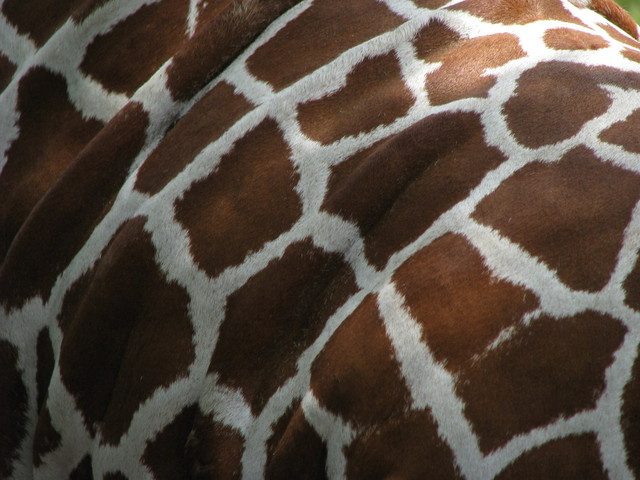
Travel to Kenya to get to know the giraffes
Spotty coat
Giraffes have a distinctive coat pattern that covers their entire body except underbellies. The pattern stands out in some a bit more than the others. Its skin color is tan with dark brown patches on males and light brown patches on females. The patches can be sharp or fuzzy edged; brown or cream shaded; yellow to black in color; and large, medium or small in size. The shapes, colors and sizes of the patches as well as the whiteness surrounding them and the separation between spots vary by subspecies. These differences in the coat tend to reflect the vegetation of the area where the subspecies live in and have a disruptive camouflage effect with different habitats. The spots blend in with the patterns that the savannah woodlands cast beneath their favorite acacia trees. This hides the animal in its dappled shadow and protects it from predators while foraging in forests.
1) Thermoregulator
Around each patch of the giraffe’s coat, there is a large blood vessel that divides into smaller vessels underneath the patch. When it gets hot, the animal sends blood through the small branches into the patches which acts as thermal windows to release body heat. This way, each spot acts as a thermal door. This sophisticated blood vessel system and thermoregulated coat helps in controlling body heat enabling them to keep fresh and conserve water. Put it simply, their body temperature fluctuates according to the surrounding temperature. Hence, they never sweat or pant, like most mammals do.
2) Patches determine age
There was a 33-year research of male Thornicroft giraffes from northern Zambia by Prof. Fred Berkovitch from Kyoto University Japan in partnership with the local naturalist Phil Berry to study the link between giraffe’s age and its patches. The study reviewed a series of observations recorded from the 1970s by a park ranger. The findings, published in the Journal of zoology, reveals that the level of darkness in a male giraffe’s spots gives away its years. The shade of patches can determine its age. In other words, by just looking at the colour of the patches in their coat you can determine its age. The older the giraffe, the darker the patches. The hairy blotches on them darken after seven years of age starting from the center slowly extending outward to the edges. They start getting darker around the time of puberty. They turn from sienna brown to coal black by an average age of 10. Males have darker spots than females, with the dominant male having the darkest ones. It is unknown what causes this physical change. But Berkovitch believes that the shift in shade is due to changes in testosterone that signals the onset of puberty in giraffes. The 3-decade long record of coat-colour changes also helped establish the fact that the maximum lifespan of Thornicroft giraffe is 22 years.
3) Patches identify individuals
Spots distinguish one giraffe from another. They help them recognize each other and tell them apart because each of them has a distinct design that serves as a unique identifier just like human fingerprints in the sense that no two patterns are the same. Researchers use these patterns to identify individual giraffes both in captivity and in the wild.
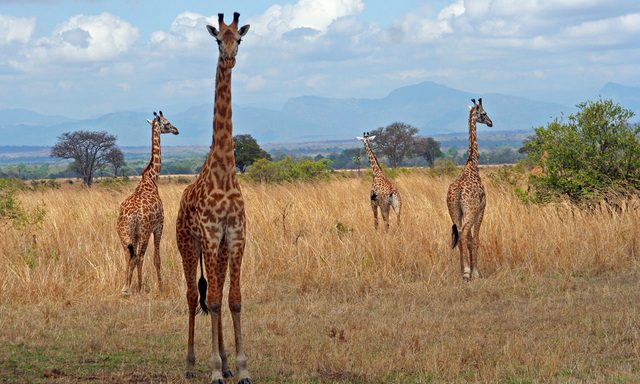
Travel to Kenya to get to know the giraffes
Social structure
A group of giraffes on the move is a journey, and a standing group is a tower. They are relatively social and non-territorial animals that go about tending their affairs with an air of serenity. Giraffes move around through a territory that can span up to 50 miles. They travel in herds that are open and unstable varying from 2 to 70 individuals. They can include mixed genders and ages, all males, all females or females with young calves. The animal has a fission-fusion social system, which means that the group composition changes continuously within weeks, days and sometimes even hours. Youngsters stay with several adult females. Individual giraffes join or come together only if threatened and they leave at will. Usually, a team consists of females and their calves but there is no team bonding. The only close bond among giraffes is between a mother and her calf. Males are solitary and nomadic and move between herds of females. Males join female groups only to seek mating partners.
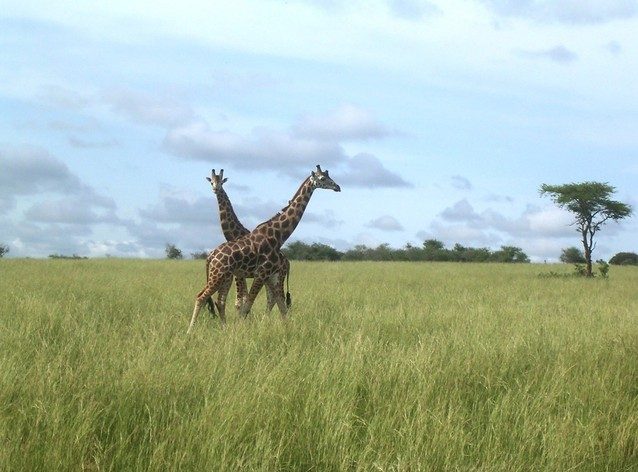
Travel to Kenya to get to know the giraffes
Mating rituals
The male giraffe in a herd often does not interact with others but tend to be aggressive when it involves mating rights. Mating occurs year-round. They do not have a set breeding season. The wandering males continuously court the females. A few older males impregnate all the females in a herd because they are polygamous by nature.
Flehmen response
The mating ritual of giraffes are rather downright bizarre, to say the least. Men move from one group to another checking the sexual receptiveness of women and determine female fertility through flehmen response whereby the male approaches a female to perform urine test. This process involves a kinky-sounding procedure wherein the female will urinate into the male’s mouth. The male smells the urine with a lip curl and tastes it to detect her estrus because the urine has a peculiar taste when the female is ready to mate. Unless that is present, he knows to leave her alone. But when he finds an estrous female and if she is ready, he keeps track of her, scuffles around her and guards her against other males all the while waiting for the strongest male giraffe to dispatch a competition. When it comes into contact with a competitor, the fight for dominance begins. Males do this as a test of strength to earn the privilege of mating.
Test of strength
It is fascinating to watch the head butting and neck banging of male giraffes. It is an elaborate fighting called necking where they swing their neck at each other to show-off their strength. This involves repeatedly twisting, swinging, entangling and banging its powerful neck to deliver massive head-butts to their male rival’s body. The two will interlock their necks and bump heads. They wrestle and strike at the rival’s body using their long muscular neck and twine it around each other as a way of establishing hierarchy. The longer the neck and heavier the head, the greater the force. These encounters rarely lead to serious injury. Whoever goes off balance surrenders and is the loser. The winner gets access to estrous females and earns the right to mate.
Courtship
Once a male giraffe wins the fight with its counterpart, the courtship with the female starts by rubbing his head near the female’s rump and resting it on her back. After a while, the male licks the female’s tail and lifts its foreleg. If the female is receptive, it will circle around the bloke holding her tail out. Then it takes on a mating position and the copulation occurs. Females can get pregnant starting from their fourth year. The gestation period lasts for up to 15 months, during which she refuses to mate. Between pregnancies, she will only consent to have sex every two weeks.
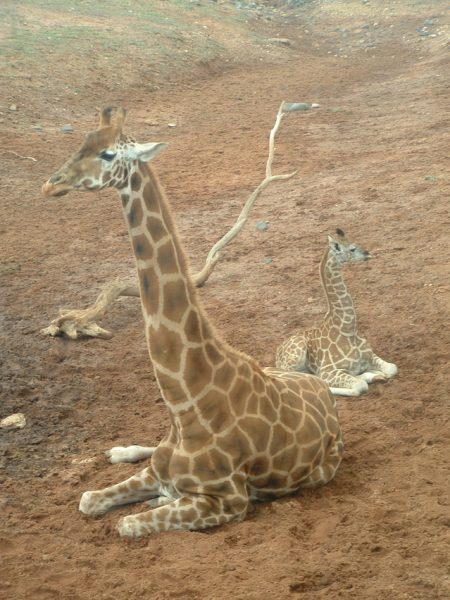 Calf
Calf
Interestingly and instinctively, females often return to the place where they were born to give birth. Giraffes give birth while standing or walking. And the placenta sack bursts when the baby falls headfirst to the ground. The calf receives a rough welcome when it enters the world. It falls from 2m to the ground i.e. nearly six feet from the air. So, the first thing a calf experience is a sudden drop onto the hard and cold ground, but it never gets hurt from the fall. Giraffes typically give birth to a single calf. Twins are uncommon, but it does occur. Newborns weigh 70 to 100kg and are about 67 to 79 inches tall from ground to shoulders. They begin sucking fifteen minutes from birth. The young can get to its feet and run within an hour of birth. The calf grows an inch a day. It starts to sample solid food within a week of birth. It hides throughout the first week and the mother stays nearby, carefully guarding and feeding it. After four weeks, the mother leaves the calf in a crèche and goes off to browse leaving the other moms who are left behind to protect its calf. A crèche is a group consisting of several moms and their offspring. Sometimes it is left alone by the mother for most of the day. During such times, the calf remains quiet until the mother returns. The mother giraffe returns before nightfall to nurse and suckle its calf. By two months they eat leaves. A young giraffe is usually weaned between six to eight months but can survive early weaning at three months.
Threats
Giraffe calves roam the African plains with real danger all around them because they are preyed upon by lions, hyenas and leopards. Crocodiles may also attack young giraffes when they come to drink water at waterholes. Hence, most calves only survive the first few months. According to scientists, only a quarter of the newborns survive their first year and only 52% of them reach maturity simply because they cannot defend themselves. But once they reach the age of two, they enter a safe zone because they are no more vulnerable to predators. After that, females tend to stay with the herd whereas males tend to become solitary until they form a pack and become dominant.
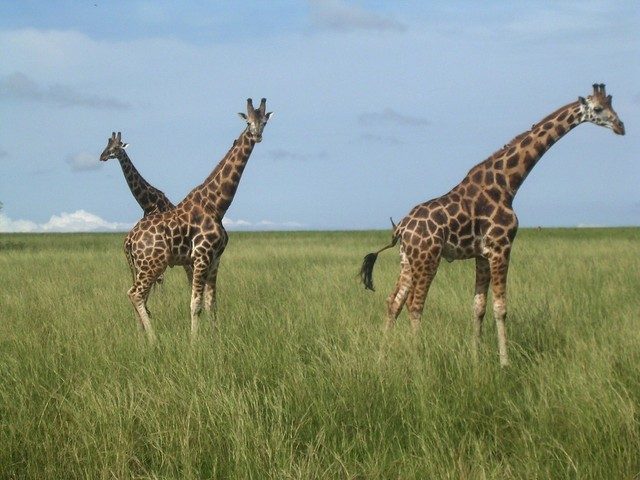 Survival tactics
Survival tactics
A mature giraffe is never an easy prey because it is well-versed in self-defence. It remains vigilant and can defend itself from predators. If pursued and attacked by predators, adult giraffes use their defense mechanism by which they kick the animals and deliver deadly blows using their front hooves. Each of its massive and sturdy legs ends in a sharp and hard 30-centimeter hoof. It can kick in a number of ways and in any direction. The kick is so powerful and lethal that even the fearsome lions avoid such conflicts because they know that it is a high risk that can render them unconscious, break their spine, shatter their skull or decapitate them. They can even be killed by the impact. Hence, few predators attack them and that too only young, elderly or sick giraffes. They target adult giraffes only when they have no choice. Lions use their pride to catch their victim. Therefore, after passing the age threshold, with the right conditions, giraffes can live for about 25 years in the wild and for up to 28 years in captivity.
Dining
Giraffes are diurnal who spend most of the day eating. But it only gets a small amount of food into its stomach in each bite taking its time to chew due to the small size of its mouth compared to its body. Females eat from the bottom branches, while males eat from the top branches. They eat and drink either during morning or evening when the heat is tolerable. During the hot midday, they can be found resting in shaded areas and chewing cud, although this can take place during any time of the day.
Digestion
Giraffes digest their food by the process of rumination. The swallowed food first goes to its four-chambered stomach where it is digested partially with the help of microorganisms, which break down the cellulose into carbohydrates. The food is then regurgitated and sent back to the mouth to be chewed again. Thereafter the food goes to different parts of the stomach to be absorbed completely. The microorganisms themselves are eaten too, providing nutrients and proteins, but not before they reproduce a new generation so that the process can continue. That way both sides receive some benefit out of this symbiotic relationship. The microorganisms get a place to live and the giraffe gets help with its digestion. And the way they obtain phosphorous and calcium supplements is by chewing on whole bones, or rather gnawing on it.
Tongue
The giraffe’s 50 centimeters long tongue is darkly colored – often blue or black. This protects them from getting sunburnt during daily sun exposure since it keeps its tongue stuck out most of the time. They use it like an elephant uses its trunk to maneuver around the long thorny branches of acacia trees to reach the leaves, strip them and yank them into its mouth. The tongue has bristly hair that helps them with eating the thorns. Then with the spatula incisor teeth, it tears them from the stem and crushes them. It’s narrow muzzles and bendable upper lips are helpful in pulling pods from trees. They also have sticky, thick saliva that coats the thorns they might swallow. The lips and even the insides of the mouth are completely covered with finger-like, hard papillae to protect it from nasty gashes of the thorns. The snake-like tongue not only grasps things but is also useful for personal grooming, such as cleaning its ears and picking its nose.
Ecological role
A giraffe does not have to compete with other animals in the wild for food because its extreme height and long neck helps them to eat from treetops where other mammals can’t reach. They use the long neck to reach the leaves in tall trees. It is adapted to reach shoots, foliage, fruits, flowers and other vegetation from tall trees that are inaccessible to other herbivores. So, when food is plentiful up in the trees, they will eat that first instead of the grass on the ground so that other herbivores can browse the grasslands. The height also helps them to remain in areas where grazing has obliterated the plants on the ground. That way, giraffes play a unique role in the ecosystem by eating leaves too high for other animals.
Diet
Although giraffes have been known to eat from many tree species including mimosa pudica and prunus armeniaca, a staple in the diet is the young leaves on whistling-thorn acacia trees. It consumes about 66kg of leaves and twigs during the 16 to 20 hours of the day that it eats but can even maintain itself on just 7kg of foliage a day in poor-quality areas. In areas where the savanna is full of minerals or salt, they can even eat soil.
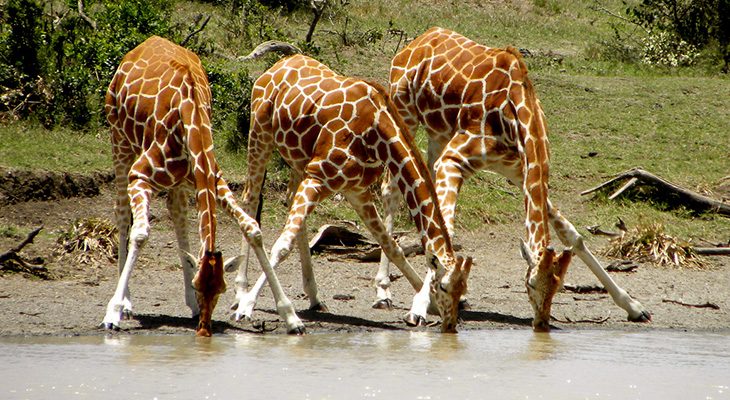 Drinking
Drinking
Giraffes can survive in regions with scarce water because they can go on for several days without drinking water. They only need to drink once every couple of days. Their digestive system extracts all the water from their plant-based diet. Hence, they live in areas where their food has more water such as savannahs of acacia trees. Its leaves have a lot of water. Because they drink only occasionally, consequently, more often than not giraffes are often found far away from waterholes. In this regard, they share the same trait as camels who are their distant relatives. But when water is available, giraffes can drink up to 10 gallons a day. During such times they drink as much as they can so that they can survive for extended periods of time without water when it is not available in arid areas.
Blessing in disguise
While the unique biology of giraffe enables it to go on without being thirsty for a lengthy time frame, when they occasionally do drink water it poses some problems that never affects other animals. And that is because, although a giraffe’s neck is long, ironically, it is too short to reach the waterhole. So, when they do come across water, they have to splay their front legs, crane their neck in an awkward position and even kneel to stoop low enough to get their head close to the ground to drink, all of which leaves them clumsy. This makes them fatally exposed to predators at the watering holes. In fact, drinking is the most dangerous time for this animal. So, the fact that they can survive without drinking water for several days comes as a blessing in disguise.
Constant thorn
People often wonder how giraffe’s heart sends blood all the way up to its brain and heart through the long neck and down its legs when it stands tall up to 5 meters high. This had even been a constant thorn for a long time in many a scientist’s and researcher’s minds. Also, there is a myth that because the distance between the brain, neck, heart and legs is a full 6 feet, giraffes often suffer from hypertension caused by the relentless uphill and downhill climb of the blood. But they don’t. Nature has provided giraffes with a complex pressure-regulatory system that controls blood flow. It is called rete mirabile.
Rete mirabile
Giraffe’s brain has blood vessels that connect to the convoluted valves in the neck veins. When giraffe bends down or lowers its head to drink water, these series of valves dilate and constrict to manage the flow of blood and prevent it from flowing back. They are meant specifically to reduce pressure by stopping the blood before it enters the brain when it dips its head. This circulatory system collects blood at the skull base and regulates blood quantity released into the brain. It prevents the head from swelling when it bends over. That helps offset the buildup or pooling of blood in their bodies when it raises, lowers or swings its head quickly. Otherwise, the blood that is pumped towards the brain at high pressure may possibly lead to brain damage. And it works in reverse as well. When it quickly lifts its head, the organ stops blood from draining out the brain quickly, saving the animal from fainting. Besides, the walls of the dense blood vessels prevent leakage and the collagen fibers keep the blood moving in changing gravity. These walls of the vessels along with the fibres thicken as the neck grows longer with age, to avoid rupturing under pressure thereby reinforcing their checks on hypertension.
Legs
Around the legs, the muscle and skin fit tightly thereby increasing the blood pressure in the lower body and stopping it from draining down. These layers of muscle and skin on its legs not only maintains pressure but also prevents vessels from bursting. Furthermore, if the giraffe were to get cut, its muscle and skin along with its inner fascia prevents blood pooling and excessive bleeding.
Heart
Research reveals that giraffes have a supercharged heart. It has the heaviest heart of all land mammals. The 2 feet long heart weighs around 12kg on average. It is incredibly powerful to pump blood all the way up to its long neck and legs. It has evolved to have a small radius and thick muscle walls, giving it high power. Its heart is capable of circulating blood to its brains when they stoop or lean over to drink. Here, the force of gravity is not only reduced but also reversed.
Blood pressure
The harder pumping to get the blood all over its body so far away requires substantial power that results in high blood pressure in the heart. It pumps 60 liters of blood in a minute, which is about three times the pressure of a human being. Hence, the blood pressure of an adult giraffe’s heart can reach at least twice as that of a human being and exceptionally high compared to other animals. But in their heads, the blood pressure remains the same as a human’s. Giraffes can maintain low pressure in their heads while maintaining high pressure in the heart irrespective of whether they are sipping water at ground level or chomping leaves from tall trees.
Source of inspiration
The adaptive cardiovascular system of giraffes has inspired NASA scientists to design and create gravity-suits for its space explorers in a way that would keep their legs healthy enough when they return to earth. The weakening of leg veins had posed a problem to the bodies of space explorers. Since the blood flow is different in space, the circulatory system doesn’t have to exert so much to pump it back up. As a result, the veins get weak and lazy, which can pose serious problems when they return to earth. Giraffes provide a solution to this issue. Aeronautical engineers at NASA observed that the calf learns how to stand 20 minutes into birth because of their rapidly inflating leg veins. So, they replicated its peculiar blood pressure regulatory system in a process called the lower body negative pressure. It’s a small machine consisting of an airtight tube that they wrap around the astronaut’s waist. It applies vacuum pressure, rapidly expanding the leg veins that makes the blood rush into them as well as the pelvic area. Thus, the legs stay in shape when this pressure is frequently applied. Now researchers are looking into designing proper tools for human beings based on this to combat cardiovascular disease and high blood pressure, which are the leading causes of death.
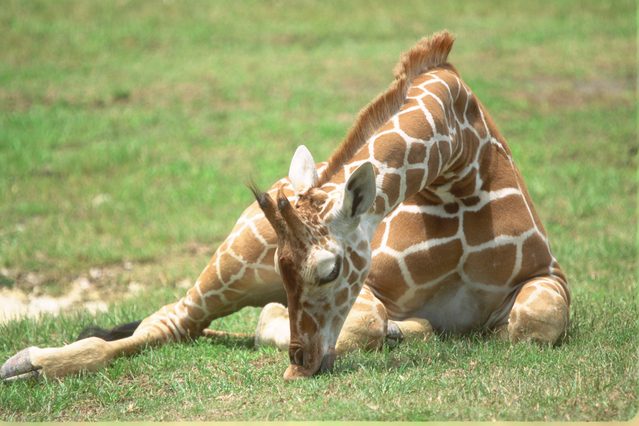 Sleeping
Sleeping
A sleeping giraffe is a rare sight. Few people have encountered a sleeping giraffe. Hence, people used to believe that they never slept. Even zoologists, scientists and field researchers thought that giraffes never slept at all. But since 1950s this has been disproven. Giraffes are considered to be one of the strangest sleepers and the most sleepless animals in the wild. They have the shortest sleep requirements of any mammal in the animal kingdom. They take naps and snoozes in short bursts for 10 minutes at a stretch which are spread throughout the day. In a 24-hour cycle, they only need a maximum of 30 minutes of sleep. They sleep by entering into a rapid eye movement phase. It is a phase when the brain is active as in a waking state, the muscles are relaxed, and the eyes move under closed lids with occasional twitches while asleep.
Sleeping position
On those rare occasions when giraffes do settle on the ground to sleep, they curl up by folding their legs and tucking their feet under them. Resting their neck in an awkward position would make them vulnerable to predators. So, they rest their head on their hindquarters by stretching it back. Apparently, they use their butts as pillows with the neck forming an arch. The internal structure of the giraffe’s neck allows them to do this without any pain. A giraffe that is found sleeping on the ground is too tempting a feast for predators. Moreover, once it lies down, getting up quickly even in response to a predator’s attack is an awkward and time-consuming procedure. Those lean legs take some time to get off the ground. And it is not equipped to defend itself against predators as it does not have built-in armor such as sharp teeth or thick hides to help it fight back. That is why, when giraffes sleep, more often they remain standing up in a fully upright position keeping their neck and head erect, with twitching ears and half-closed eyes. Sometimes they continue browsing and ruminating while asleep.
Sleeping in captivity
In captivity, giraffes sleep around 5 hours a day. It just emphasizes the fact that the sleeping habits of giraffes in the wild have evolved out of vulnerability to predators. Hence, being defenseless and large, giraffes are on guard against its predators all the time. In a group they take turns to allow some members to rest while the others keep a watch out for predators.
Stress level
A giraffe can sleep only when it is at ease. It will skip sleep when its stressed, for example, when it has just been transported from the wild to a zoo or from one zoo to another. They even feel pain when they lose a mate or when their herds change. And it takes up to three weeks to restore its sleeping patterns to the standard level. So just like humans, its stress levels do affect its sleep.
Unanswered questions
Why do other animals who are highly potential prey to lions and hyenas do not have similar sleeping habits? They seem to spend more time sleeping than the giraffes do and yet are even more vulnerable to the powerful beasts in the jungle. Perhaps the scientists have to take a look at variables other than vulnerability to predators when it comes to determining the causes of the strange sleeping behavior of giraffes.
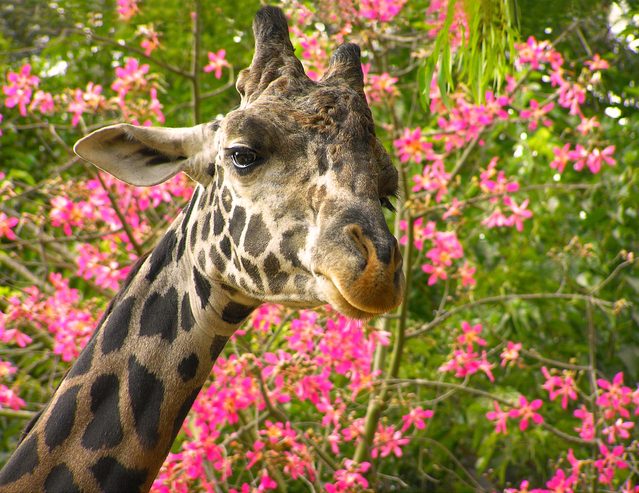 Species
Species
There are nine different species of giraffes. They are Reticulated or Somali giraffe, Kordofan giraffe, Nubian giraffe, South African or Cape giraffe, Angolan or Smokey giraffe, West African or Nigerian Giraffe, Rhodesian or Thornicroft giraffe, Rothschild or Ugandan giraffe and Maasai or Kilimanjaro giraffe. Each of them is differentiated by range as well as by the color and size of their coat patterns. The taxonomy of the different species of giraffes is not widely and popularly agreed. Some scientists regard West African and Kordofan giraffes as a single subspecies, the same way with Rothschild and Nubian giraffes, as well as with South African and Angolan giraffes. Furthermore, some scientists consider all of them except Maasai giraffes belonging to a single subspecies. Some others have proposed four other subspecies – Lado giraffe, Cape giraffe, Transvaal giraffe and Congo giraffe – but none of them are widely accepted.
1) Reticulated, Netted, Somali giraffe
Other names for Reticulated giraffe are Somali giraffe and Netted giraffe. This subspecies lives in southern Ethiopia, northeastern Kenya and Somalia. It has the most complicated spot patterns of any subspecies, although it is hard for the untrained eyes to distinguish. Their clear dark orange-brown spots are large and smooth-edged with narrow channels between them that make them appear darker than other species. Bold and bright white lines separate the sharp-edged patterns. The design looks like a perfectly-planned mosaic and creates a web-like effect. They are the most commonly kept ones in zoos. Around 450 are captive in zoos. There are fewer than 5,000 of them in the wild at the moment, down from 31,000 in 1998.
2) Kordofan giraffe
Native to Chad, Cameroon and Central African Republic, Kordofan giraffe has smaller and random spots that extend to the inner legs. There are about 65 of them in the zoos and 3,000 in the wild.
3) Nubian giraffe
Nubian giraffe thrives in eastern Sudan and northeastern Democratic Republic of Congo. Their coat pattern consists of large and four-sided spots which are chestnut brown in color on an off-white background. There are no spots on the inner sides of the legs. It is very rarely kept in captivity. Having said that, the zoo in Al Ain, United Arab Emirates has one. There are fewer than 250 of them in the wild, although this figure is uncertain.
4) South African giraffe
Native to Botswana, Mozambique, Zimbabwe and South Africa, the South African giraffe has blotched, rounded or star-like extension spots on a light tan background that run all the way down to the hooves. About 45 of them are in the zoos and 12,000 of them in the wild.
5) Angolan, Smokey giraffe
Described as smokey because of their light color, Angolan giraffes have notched indentations in their large spots on a white to cream background, extending down the lower legs. The lines between spots are darker than other giraffes, making them harder to distinguish from their spots. They occur in Angola, Namibia, Zambia, Botswana and Zimbabwe. About 20 of them are in the zoos and 20,000 of them remain in the wild.
6) West African giraffe
Commonly called Nigerian or West African giraffe, this subspecies of giraffe has numerous pale and yellowish spots. They are light in appearance, with rectangular tan blotches separated by cream-colored lines, with no patterning on their lower limbs. It is the rarest subspecies with only 220 of them remaining in the wild. Since it is native to southern Niger, it is also called Niger giraffe.
7) Rhodesian, Thornicroft giraffe
Luangwa valley in eastern Zambia is home to Rhodesian giraffe. It is also known as Thornicroft giraffe. It has star-shaped spots that extend to lower legs. They are never in the zoos, but an estimated number of 1,500 roam around in the wild.
8) Rothschild, Ugandan, Baringo giraffe
Rothschild giraffes have spots that are wavy on the edges. The spots are deep brown, rectangular or blotched with poorly defined cream lines. But the subspecies can be identified by the cream color below their knees that look like creamy stockings with no pattern. They roam the savannas of Kenya, Sudan and Uganda near Lake Baringo. Therefore, they are also called Ugandan giraffe or Baringo giraffe. Fewer than 700 are in the wild and 450 of them are kept in zoos.
9) Maasai, Kilimanjaro giraffe
Maasai giraffes are the icons of Kenyan plains. They are also known as Kilimanjaro giraffes. They are the tallest and the most abundant among the subspecies of giraffes in the wild. The thing that differentiates Maasai giraffes from other species is the design of its irregular star-shaped patches which are several shades of brown, orange or cream. The spots are jagged compared to other species. The dark brown spots on a brownish-cream background seem like vine leaves or maple leaves with jagged edges. They also look like grape leaves or oak leaves, with rounded indentations and wavy, ridged edges. Maasai giraffes have the darkest spots that appear almost black, and the lighter color between spots is darker than other giraffes. The patches are buff-colored from below the knee. Initially, Maasai giraffes occur throughout Kenya, Tanzania, Ethiopia and Somalia. They’re the ones most likely to be seen during safaris in Kenya and Tanzania. In fact, giraffe manor in Kenya doubles as a Maasai giraffe sanctuary and a place to hang out with giraffes all day long. About 100 of them are in the zoos and 40,000 of them remain in the wild.
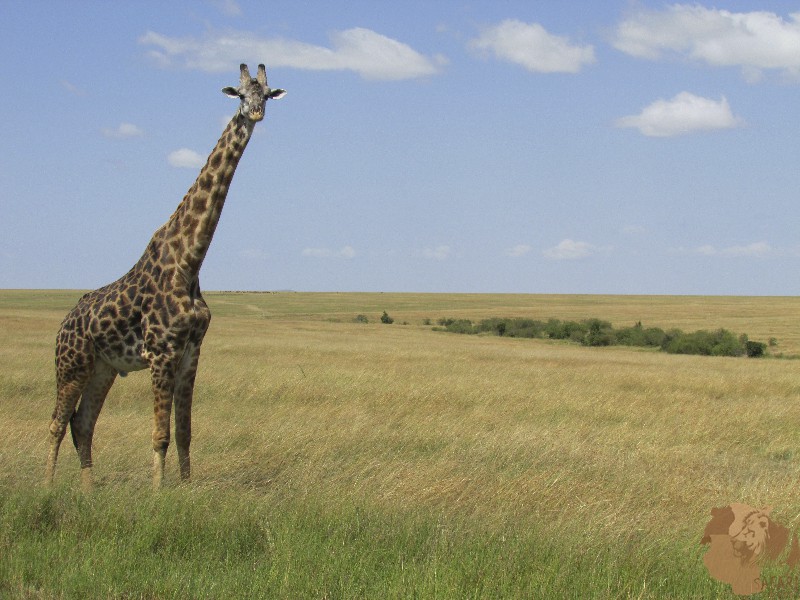 Past, present and future
Past, present and future
A journey through the glorifying times of giraffes in the past as well as in the present and future gives a clue as to how far giraffes have come. Their history in ancient times depicted them as regal and majestic. In modern times, their blood regulatory system has led to innovations in space explorations. But their future is uncertain unless conservation measures are put in place to mitigate the negative consequences of degradation and poaching.
Giraffes in ancient times
Egyptian rulers found giraffes so impressive and regal that they gave them as presents to the leaders of other countries. They even paraded giraffes in front of their subjects. They found giraffes relatively easy to transport down the Nile. So, the hunters provided a steady supply of these exotic animals. At one time, the sultan of Egypt gifted a giraffe to Lorenzo de Medici of Florence. It caused quite a sensation as the animal wandered through the streets of Florence accepting treats offered by residents out of their second-storey windows. The most famous recipient of this Egyptian gift was Julius Caesar, who was so impressed by the present that he brought it to Rome and paraded the prized animal. The linking of camel and leopard to giraffe traces back to when Julius Caesar named his new prize camelopard because it resembled a cross between camel and leopard. It has the long neck of a camel and the spots of a leopard. The name survived well into the nineteenth century. And now several European languages have retained it.
Zarafa
The most famous giraffe celebrity in history is Zarafa. It was the first giraffe in France. It was a royal gift by Muhammad Ali, the Egyptian-Ottoman viceroy, to King Charles X. Zarafa is an Arabic word meaning the lovely one. It arrived in France in October in the year 1826 and paraded from Marseilles to Paris. People came out to follow her progress, and her friendly and regal demeanor made her the talk of the town wherever she went. Zarafa became the biggest celebrity in France with the set-up of a shop in Paris at the Jardin des Plantes. Famous writers wrote about her. Artists painted pictures inspired by Zarafa. Women started wearing hairstyles and clothing patterned after giraffe spots. Giraffe-themed decorations and furniture were all the rage. Eventually, the entire Europe caught giraffemania. But sad to say, Zarafa spent her final years as a recluse because, like every craze, it fell out of fashion. The public stopped coming. Most probably, she enjoyed the quiet and peace after a lifetime of being followed by millions of people.
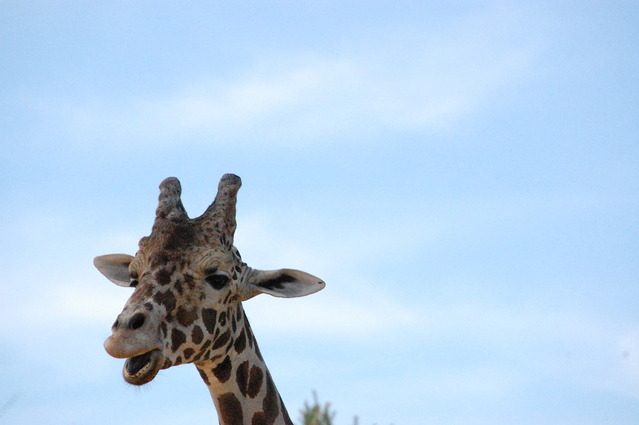 Giraffe song and dance
Giraffe song and dance
African belief system gave birth to giraffe song and giraffe dance because of its great reverence to the animal. Legend has it that a woman in the 1950s saw a vision of a herd of giraffes running in the rain. The beautiful melody created by the sound of hooves and raindrops turned into a giraffe song, which in turn spawned into a giraffe dance. It is a mystical dance consisting of men dancing in a large circle. The women sit inside the circle in a group, singing the giraffe song.
Giraffes in the future
Giraffes are classified as vulnerable because its population has fallen. Currently, there are about 90,000 of the tallest mammals left in the whole of Africa and they are under a lot of pressure. Some subspecies are in danger of extinction. Lions and hyenas are the main predators of giraffe calves.
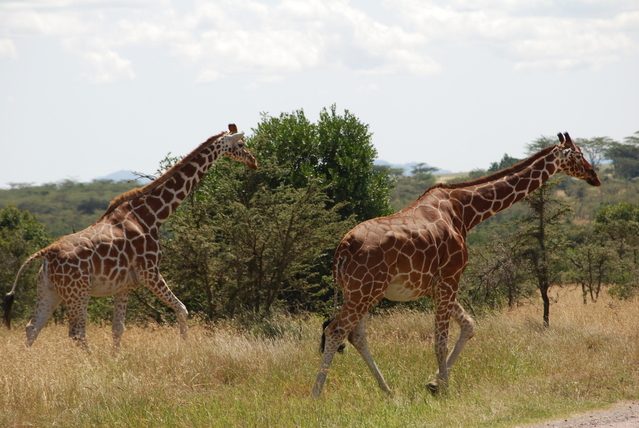 Threats
Threats
Giraffes face several threats such as habitat destruction due to logging and farming. Scientists blame explosion in human settlement for the plummeting population of giraffes. Sadly, the unusual size of giraffes does not necessarily mitigate the negative consequences caused by such factors as habitat degradation and fragmentation. Rapid population growth and policy neglect have seen the number of settlements surge along the border of Maasai Mara. The area is now being turned over to crop production and livestock. It means that giraffes are now competing with farmers and cattle for habitat. Destruction of trees also have an adverse effect. Besides, historical distribution is fragmented through disease as well.
Poaching
Hunters are hauling in record numbers because many believe that giraffe meat and its bone marrow is a cure for HIV. And killing a giraffe involves little effort for the quantity of meat yielded. In rural tribes, bush meat forms part of the diet as well as a source of income. Ruthless poachers kill adult giraffes even in protected areas leaving their offspring with no chances of survival. Apart from meat, people also hunt them for coat and hides. Its tail is valued by many tribes in Africa as good luck and make bracelets, sewing bead strings and fly whisks out of it. Moreover, its skin is thick and suitable for a range of purposes. They make clothing, shoes, bags, hats, belts and drum covers out of its skin. Its hair is used to make jewelry such as necklaces. Maasais use the coat for covering of shields. Manufacturers turn the thick skin into buckets, whips, reins, straps for harnesses and musical instruments.
Conservation
Giraffes are considered to be one of the most emblematic animals on the planet. But few are aware and know surprisingly little about the conservation issues they face. Wild nature institute scientists are conducting the biggest giraffe conservation research study to discover where giraffes are not doing well and why. Using a computer program, they recognize and monitor each giraffe that are under observation throughout their lifetimes. The program aids in identifying individual giraffes through their unique fur pattern from photographs. The research is also working to protect areas critical to the conservation. Will its conservation status change from vulnerable to extinct or safe? Time will tell.
Population status
The conservation status is currently under review by IUCN. After researchers had surveyed the giraffe population in trucks, by foot, by remote cameras and by aircraft, they confirmed that since 1985 their numbers had plummeted by 40%, with some subspecies even direr. Reticulated giraffe population has declined by 80%. To help preserve giraffe population, people must boycott products made with their body parts and urge others to do the same.
Save the giraffes
The reduction in giraffe population is an alarming warning signal about their conservation. It is a problem that needs to be addressed and acknowledged through intensive research, educational efforts and conservation. The absence of conservation plans to regulate the heinous crimes perpetrated against this gentle animal will only worsen the situation. One of the reasons why conservationists find it hard to recover the vulnerable subspecies of giraffes is that the gestation period is very long. It takes 15 months for a baby giraffe to be born. That combined with the fact that only about 25% of the calves make it to maturity because of their vulnerability to predators makes conservation a challenging task. Government and civil society alike should respect and promote conservation of the endangered giraffe subspecies. Giraffes are elegant, beautiful, attractive and noble animals that deserve all the protection before it is too late. Fortunately, there are some organizations responsible for safeguarding the life of giraffes. They educate, plan, organize, act, delegate and report on the animal’s status. We can contribute too by spreading awareness about its plight. Otherwise, these gentle giants are at risk of turning their glorifying past and present into horrifying future. Today, conserved populations of giraffes are thriving, and conservationists have reintroduced them to game reserves and private ranches. And the beautiful animals are a major tourist attraction for safari lovers.
To receive a colourful digibook about Zebra with videos, images and text, please fill out the following form or simply email us on safaris@safari-center.com

